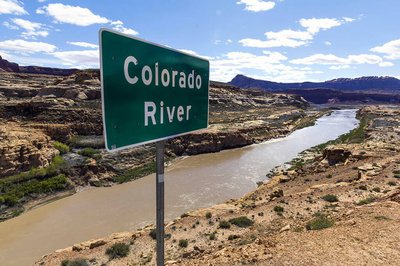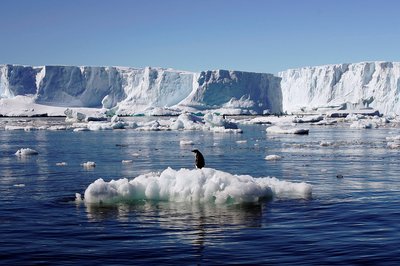NOTE: If you are short on time, watch the video and complete this See, Think, Wonder activity: What did you notice? What did the story make you think about? What would you want to learn more about?
SUMMARY
The demand for water from the Colorado River is of paramount importance out West and the focus of some big battles. It's been especially critical for farming and agriculture. In California's Imperial Valley, there are growing questions over the use of that resource and whether bigger changes are needed. Science correspondent Miles O'Brien reports.
View the transcript of the story.
News alternative: Check out recent segments from the NewsHour, and choose the story you’re most interested in watching. You can make a Google doc copy of discussion questions that work for any of the stories here.
key terms
ecosystem — an environment formed by the relationship between living things such as plants and animals, and non-living things such as rocks, soil and waterways
WARM-UP QUESTIONS
- What river supplies the Imperial Valley with much of its water?
- Where is the Imperial Valley, and what kind of ecosystem is it?
- Why is the Imperial Valley called "America's winter salad bowl"?
- Who are some of the people that want the Imperial Valley to use less water?
- How are farmers and authorities trying to address water shortages in the Imperial Valley?
ESSENTIAL QUESTIONS
After watching this segment, how do you think the Imperial Valley should address its water management issues?
- Do you think technology can help solve the problem by making water use more efficient? If so, what ideas do you have to save water while continuing to grow crops?
- Do you think compromise with other regions is important? If so, what agreements do you think farmers in the Imperial Valley can come to with other people who depend on water from the Colorado?
Media literacy: Who else do you think is affected by water shortages in California? Who else would you want to hear from to help decide how access to water could be fairly distributed?
WHAT STUDENTS CAN DO
Do you know where you get your drinking water from in your community? As a class, discuss what body of water serves as a reservoir for your community. It may be a lake, river, artificial reservoir or water from under the ground.
Once you've determined the source of water, check local news sources to find out if any challenges exist to maintaining the water supply for everyone who needs it, and respond to one or more of the following questions:
- Is your community growing?
- Are expanding farms or industries like data centers putting a strain on the supply?
- Are you able to find any news items about threats to the health of the water supply, including lead or other contaminants?
Once you've completed research, brainstorm ways to address the challenge. Are their technological solutions, or would some political compromise or regulation be more effective in protecting the water supply?
You might also read this article to learn more about the struggle for control over the Colorado River — a critical resource for communities across the western U.S.

The Colorado River along the Glen Canyon National Recreation Area on April 22, 2023, in Hite, Utah. (L.E. Baskow/Las Vegas Review-Journal/Tribune News Service via Getty Images)
Fill out this form to receive our weekly newsletter or share your thoughts on Classroom’s resources.





